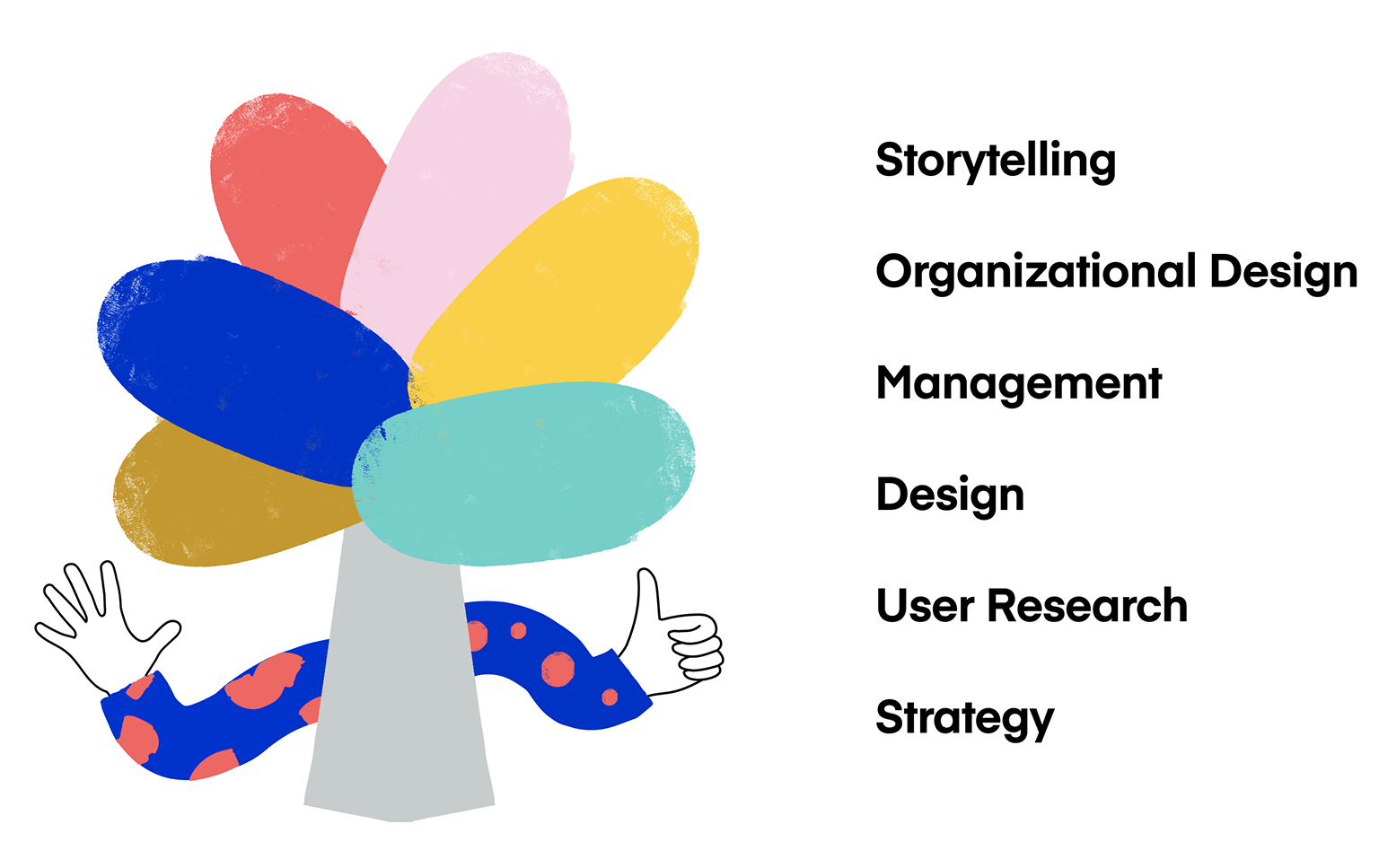
The state of service design in 2021 — and beyond
2020 was a year like no other. The events of last year forced us to reset our values, goals, and daily habits. And not just as individuals — because of the global scope of events, people across the world were united through the same uncertainty (and Zoom).
But in spite of all the uncertainty and turmoil, it was also a year that proved that rapid innovation is possible. Due to the pandemic, many companies had to make dramatic changes in a short amount of time. One of our Idean colleagues describes these changes well in this blog. Shifting in-person touchpoints to online, focusing on local and remote, taking versatile regulations into account and optimizing the back-end of services accordingly, demanded that we design services in a new context.

So, as we’ve entered 2021, we wanted to provide our perspective on how service design in the US is evolving, and on the kinds of challenges — and opportunities — the new year may bring.
Facing the challenges ahead
To shape our path forward as a service design practice, we started by looking back. Service design began 25 years ago, and over the years it has gone through stages of experimentation, framing and expansion, as described in the Future of Service Design report.
The practice has reached a “new normal’ in Europe. However, it has not yet reached this level of maturity in the United States. As described by Jamie Nicholson, the Product Research lead for Product Experimentation at Facebook, “In the US it’s all about innovation, whereas in Europe it’s more about service design.” And in our daily practice at Idean, we still see these differences. Which means that for service design to reach the same level of maturity in the US, we have to overcome a number of challenges.
“Service design is… what?”
We realize it’s hard for businesses to keep up with all the different design disciplines — UX design, interaction design, business design, product design, and many more. We also agree that there is overlap between the disciplines that increases this confusion (this overlap is rooted in Design Thinking). Nonetheless, the uniqueness of service design — evaluating and designing experiences with an eagle-eye perspective and taking the front-end and the back-end of services into account — is worth understanding and exploring.
But unlike in Europe, the value of service design is not yet fully acknowledged across industries and professions in the US. Additionally, the American Service Design community is not large enough to spread the love for the practice and lacks support from universities and colleges. So the first hurdle to overcome is the lack of education and awareness of service design.
The service design practice takes practice
Similar to design thinking, there seems to be a common belief that service design is mostly a soft skill and a mindset; you don’t need experts, but you need someone who has read a book or has gone through a one-day training. This results in badly executed qualitative research or superficial customer journeys for the sake of fulfilling the service design deliverable. And this leads to faulty insights, disappointed clients and reputation damage.
Service design professionals need to openly discuss, define, and inform quality standards.
Kalle Bushmann
While we want to welcome as many service designers into the community as possible, we have to ensure that we are consistently producing quality work.
Many organizations aren’t ready, yet
Most companies, especially the larger ones, have shifted their mindset to exploring experiences rather than products. However, they haven’t restructured accordingly, so they still can’t take full advantage of this approach.
Product Managers often focus on a single product or feature, and attempts to apply service design across touchpoints, initiated by middle-management, often fail because of the siloed nature of the organizations and lack of support from upper management (source: Future of Service Design). Companies need guidance on how they can effectively shift to incorporating service design in a meaningful way.
New year, new opportunities
There are plenty of amazing opportunities for service designers in the near future. But how do we tap into those opportunities? Here are some of the things we believe can make a difference, and some classic “How might we…” questions we’re asking ourselves right now.
Do right, for everybody
Back in the day, placing the user in the center of every decision-making process was considered revolutionary in most businesses. Taking a user-centric approach is still important, but things are evolving. We also have to think beyond our customers’ needs. Last year showed us (once again, on a large scale), the importance of fighting for justice and equality, and the responsibility we all have in doing this.
Being inclusive as a brand or service is no longer enough.
Today’s customers, especially the upcoming Gen Z, demand companies not only to be inclusive but also to proactively support, champion and strengthen disadvantaged communities. How can service design address this new way of thinking? How might we create signature moments in our services that support the fight for justice and equality within society?
Restore the relationship between the public sector and the citizen
In the US, government agencies face many hurdles to moving quickly and adopting new practices in design thinking and innovation. Disconnected services, inadequate digital platforms, unresponsive customer service, and complex regulatory environments have made it challenging to meet end-users’ needs. Especially since the public sector often has limited knowledge about their end-user (source: Deloitte).
Last year showed the large-scale impact that government services have on our daily life and the importance of thoughtful and accessible services. The challenges faced by the public sector are classic challenges perfectly suited for the service design practice. How might we transform the public sector into citizen-centered service organizations?
Reach the C-level
The fact is, to overcome the organizational hurdles in implementing service design initiatives, we have to suit up and get a seat at the table with the boards of organizations.
By speaking the same language as business leaders, we can show them the value service design can bring – optimizing service orchestration and creating truly desirable end-to-end experiences. How might we shift from bottom-up service design initiatives to top-down service design strategy? It starts with talking to decision makers.
Looking forward
As new challenges and opportunities for the service design practice emerge over time, the practice itself needs to evolve, as well. Inspired by the Future of Service Design report, we’ve defined our next steps as Service Designers (you might call them our “New Year’s resolutions”):
1. Expand our skills and expertise beyond research, design, and strategy
Being a T-shaped designer is no longer enough, we need to be “tree-shaped” designers — adding organizational design, storytelling, change management, and more to our skillset.

2. Interweave data science with service design
To engage data-led organizations (and especially their boardrooms) in service design methodologies, we have to meet them in the middle and speak their language. Qualitative research is not enough, we need to interweave quantitative data analytics into our story.
3. Leverage the remote working situation to the fullest
Now that remote work has become the new standard, it’s easier than ever to connect with people across the country and around the world. We no longer need to all be in the same room to collaborate effectively with other service designers, clients, and last but not least, customers. So we can make stronger connections and create a stronger, more vibrant community. Let’s take full advantage of that opportunity.
It’s never too late to list your New Year’s resolutions. And we expect there is overlap between opportunities and challenges across (design) disciplines. What are your challenges and opportunities for the (near) future? And what are your resolutions? Let’s chat!

frog, part of Capgemini Invent is a global design and innovation firm. We transform businesses at scale by creating systems of brand, product and service that deliver a distinctly better experience. We strive to touch hearts and move markets. Our passion is to transform ideas into realities. We partner with clients to anticipate the future, evolve organizations and advance the human experience.
We respect your privacy
We use Cookies to improve your experience on our website. They help us to improve site performance, present you relevant advertising and enable you to share content in social media. You may accept all Cookies, or choose to manage them individually. You can change your settings at any time by clicking Cookie Settings available in the footer of every page. For more information related to the Cookies, please visit our Cookie Policy.